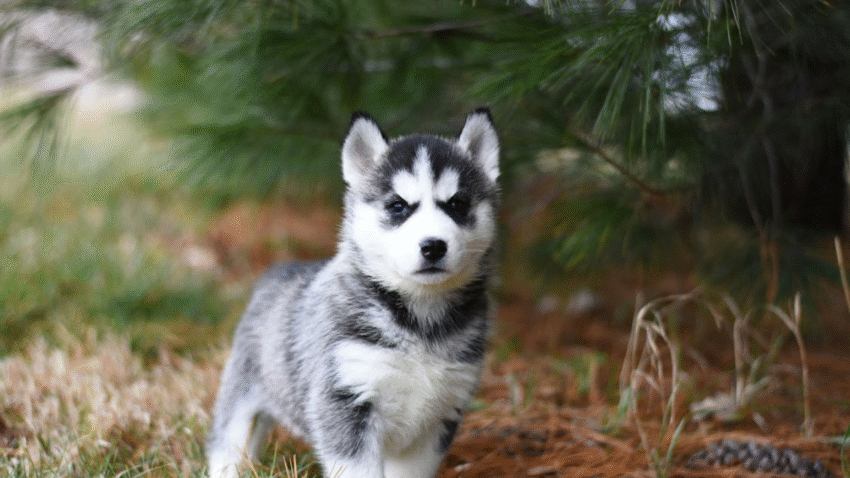Introduction
Does your dog bolt out the door the second it opens? Teaching your dog to wait at doors is one of the most important safety skills they can learn. It prevents accidents, builds impulse control, and makes daily life easier—especially when welcoming guests, heading out for walks, or loading into the car. In this guide, you’ll learn how to train your dog to wait calmly at doors using simple, step-by-step methods.
Why Door Waiting Matters for Dogs
Door dashing isn’t just annoying—it can be dangerous. A dog that rushes through open doors could end up in traffic, chase another animal, or become lost. Training your dog to pause and wait calmly at doorways teaches control and keeps everyone safe.
Benefits of teaching your dog to wait at doors:
- Prevents accidents and escapes
- Encourages calm behavior and impulse control
- Makes transitions (walks, car rides, visitors) smoother
- Reinforces your role as the decision-maker
Whether you have a hyper puppy or a curious adult dog, this skill builds long-term manners and obedience.
Step-by-Step Guide to Training Your Dog to Wait at Doors
1. Choose a Door and Prepare Your Tools
Start training at a quiet interior door with minimal distractions (like a bedroom or bathroom). Have these ready:
- High-value treats or kibble
- A leash (for safety and control)
- A clicker (optional, for clicker training)
2. Introduce the “Wait” Cue
Stand with your dog on leash near the closed door.
- Ask your dog to “Sit” or “Stand.”
- Say “Wait” in a calm, firm tone while holding your hand in a “stop” signal.
- Slowly begin to reach for the doorknob.
If your dog stays still, reward with a treat and praise. If they move forward, gently close the door or block movement with your body. Repeat until they begin to stay in place.
3. Practice Opening the Door Slightly
Once your dog reliably waits with the door closed:
- Say “Wait.”
- Slowly crack the door open 1–2 inches.
- If your dog stays in place, reward immediately.
- If they move forward, close the door and reset.
Repeat in small increments, gradually opening the door wider as your dog improves.
4. Increase Duration and Distance
- Ask your dog to “Wait” and begin to open the door fully.
- Step one foot through the door—then return and reward.
- Build up to walking fully through the door and returning, with your dog staying put.
Keep sessions short and end on a success to keep motivation high.
5. Add a Release Cue
Dogs need to know when it’s okay to move. Teach a release word like:
- “Okay”
- “Free”
- “Let’s go”
Say the release word only when you want your dog to walk through the door. This reinforces that you—not the dog—control when movement happens.
6. Practice at Different Doors
Once your dog consistently waits at one door, try others:
- Front door
- Backyard door
- Car door
- Crate door
Consistency across all situations helps your dog generalize the behavior.
7. Introduce Distractions Gradually
Start adding real-world distractions:
- Someone ringing the doorbell
- People walking by outside
- Other pets around
Use your leash for control, and reinforce calm, still behavior. Don’t add too much at once—build slowly for success.
Common Mistakes to Avoid
1. Repeating the Command
Saying “Wait” over and over weakens the cue. Say it once, then act if your dog breaks position.
2. Forgetting the Release Cue
Don’t just let your dog wander off after waiting. Always give the release word to maintain structure.
3. Opening the Door Too Fast
If you rush the process, your dog won’t have time to understand. Go slowly and reward progress at each stage.
4. Inconsistent Reinforcement
Letting your dog bolt “just this once” sends mixed signals. Stay consistent to reinforce the habit.
5. Using Harsh Corrections
This is a skill based on patience and control, not punishment. Avoid yelling or yanking the leash—instead, calmly reset and reward success.
Extra Tips & Recommendations
Use a Visual Barrier for Early Training
If your dog is very eager, set up a baby gate or use your body to block the doorway. This helps reinforce the physical boundary while they learn.
Reward Calmness, Not Just Stillness
Look for soft eyes, relaxed posture, and quiet breathing. These are signs your dog is truly calm—not just frozen in place.
Practice Before High-Energy Times
Reinforce door-waiting before walks, meals, or play. This teaches patience even when your dog is excited.
Gradually Fade the Treats
Once your dog is reliable, start rewarding every other time, then less frequently. Eventually, your dog will wait because it’s expected, not just for treats.
Conclusion
Teaching your dog to wait at doors is one of the simplest—and most powerful—ways to increase safety and improve their manners. With daily practice, patience, and plenty of praise, your dog can learn to pause, look to you for permission, and walk calmly into every new situation. This skill lays the groundwork for a well-behaved, thoughtful companion.
🚪 Want more training tips like this? Bookmark How to Dog Blog and master the art of calm, confident dog parenting!
